.
28.08.2015

ESA astronaut Andreas Mogensen is pictured during a 'fit-check' of the Soyuz TMA-18M spacecraft. On 2 September, the Soyuz will carry Andreas and crewmates Sergei Volkov and Aidyn Aimbetov to the International Space Station. As part of their preparations for the launch the crew inspect their spacecraft.
Following launch from Baikonur, Kazakhstan, at 04:34 GMT (06:34 CEST, 10:34 local time) on 2 September 2015 the crew will arrive at the Space Station just six hours later. Andreas and Aidyn will stay for just 10 days. They will leave Sergei on the Station and return to Earth in a different Soyuz together with Gennady Padalka, who is already in space.
.
ESA astronaut Andreas Mogensen will leave for the International Space Station from Baikonur cosmodrome in Kazakhstan on 2 September with commander Sergei Volkov and Kazakh cosmonaut Aidyn Aimbetov. Their flight in the Soyuz TMA-18M spacecraft will take two days, arriving at the Space Station on Friday morning.
From 2013 onwards Soyuz spacecraft typically reached the International Space Station in around six hours. The longer flight for Andreas is due to the Space Station’s higher than usual orbit. The weightless research laboratory’s orbit was recently raised in a standard space-debris avoidance manoeuvre.
When a Soyuz spacecraft is launched into space it catches up with the International Space Station that is orbiting Earth at 28 800 km/h. It has to reach the same speed as well as the same altitude.
Because of the Station’s higher altitude, reaching the weightless research facility in six hours is now more difficult and Roscosmos decided to allow the Soyuz TMA-18M more time to rendezvous and dock.
Andreas, Sergei Volkov and Aidyn Aimbetov will be in radio contact with ground control during the two-days they spend in their Soyuz catching up with the Space Station.
For Andreas Mogensen and ‘iriss’ mission control the shorter time spent on the International Space Station will mean a significant replanning of his time and experiments.
Some experiments will undoubtedly have to be left for other astronauts to complete at a later date. Mission control will be working through the weekend to fit the pieces in to the new scheduling puzzle.
.
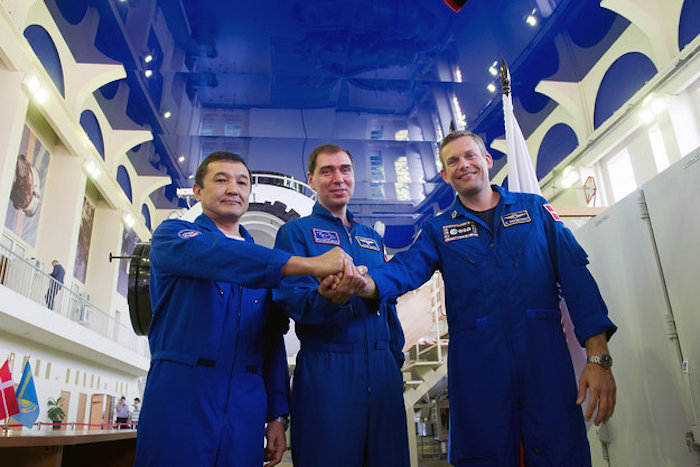
ESA astronaut Andreas Mogensen (right) and his Soyuz TMA-18M crewmates Sergei Volkov (centre) and Aidyn Aimbetov (left) at Star City earlier this week, ahead of their final exams before launch to the International Space Station in a few week's time.
They are set leave Earth from Baikonur, Kazakhstan, at 04:34 GMT (06:34 CEST, 10:34 local time) on 2 September 2015 and arrive at the Space Station just six hours later.
Andreas and Aidyn’s stay will be short – they will be back on terra firma just 10 days later. They will leave Sergei on the Station and return to Earth in a different Soyuz with Gennady Padalka, who is already in space.
---

ESA astronaut Andreas Mogensen will board the Soyuz TMA-18M flight to the International Space Station in September 2015.
Andreas is the Soyuz flight engineer, flying with with commander Sergei Volkov and Kazakh cosmonaut Aidyn Aimbetov. The mission for Andreas and Aidyn is part of a marathon mission for NASA astronaut Scott Kelly and cosmonaut Mikhail Korniyenko, who will stay in space for 11 months. An older Soyuz crew ferry is reaching the end of its six-month ‘space warranty’ and needs to be replaced by a new craft delivery courtesy of Sergei, Andreas and Aidyn.
Andreas has an essential role in this spacecraft swap, assisting both Soyuz commanders on each flight as a flight engineer, or second-in-command.
.
Early September will see the very first force-feedback-based teleoperation of a rover-based robotic arm system on Earth from the International Space Station, orbiting 400 km above our heads.
Danish ESA astronaut Andreas Mogensen will take control of the Interact Centaur rover, which incorporates a pair of arms to perform precision operations.
In the process Andreas will make use of haptic control – providing him with force feedback to let him feel for himself as the robotic arms encounter resistance. In this way, he can perform dexterous mechanical assembly tasks in the sub-millimetre range, remote-controlled from space.
.
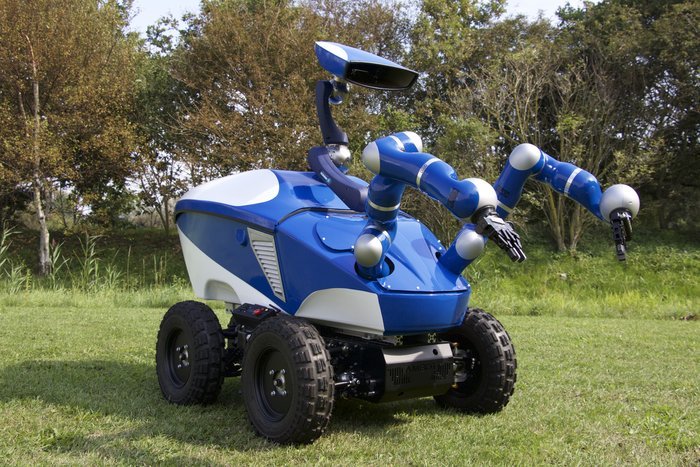
ESA's Interact Centaur rover, developed for telerobotics experiments. The 4x4 wheeled vehicle combines a camera head on a neck system, a pair of highly advanced force sensitive robotic arms designed for remote force-feedback-based operation and a number of proximity and localisation sensors.
“When we humans have to perform precision operations, for instance simply inserting our key into the lock of our door, we are relying largely on our feeling of tactile and force receptors in the hand and arms – not on eyesight,” states André Schiele, principal investigator of the experiment, head of ESA’s Telerobotics and Haptics Laboratory and Associate of the Delft Robotics Institute.
“Visual information is of minor importance – these kind of tasks can be done with our eyes closed. Now ESA is transferring this skill to remotely-controllable robotic systems.
“Without haptic feedback, the operator of a robot arm or rover must be very careful not to damage something if the robot is in contact with its environment. As a result, a simple task in space often takes a very long time.
“Moreover, the tactile sensation derived from any task contains important information about the geometric relationship of the objects involved and therefore allows to execute tasks more intuitively and thus significantly faster.”
The Lab team, working with students from Delft University of Technology, has developed a dedicated rover called Interact Centaur. The 4x4 wheeled vehicle combines a camera head on a neck system, a pair of highly advanced force sensitive robotic arms designed for remote force-feedback-based operation and a number of proximity and localisation sensors.
As currently scheduled, Monday 7 September should see the Interact rover driven around the grounds of ESA’s ESTEC technical centre in Noordwijk, the Netherlands, from the extremely remote location of Earth orbit, 400 km up.
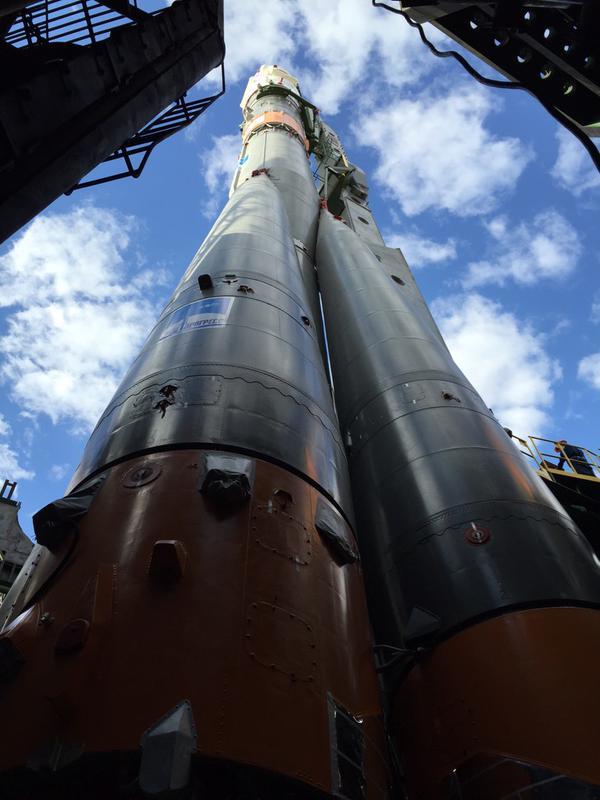
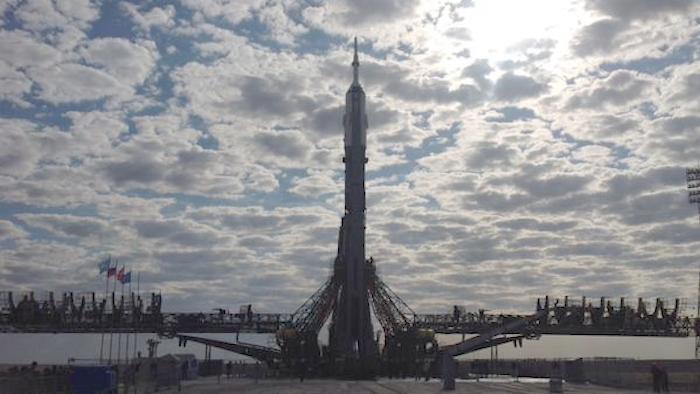
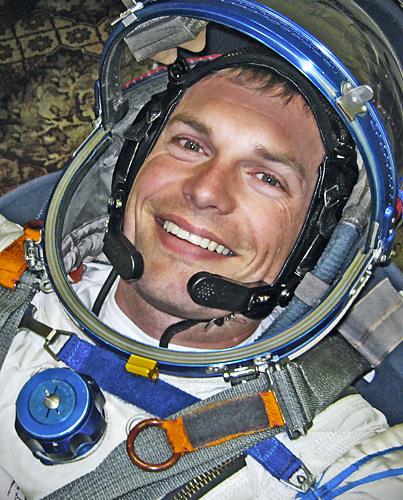
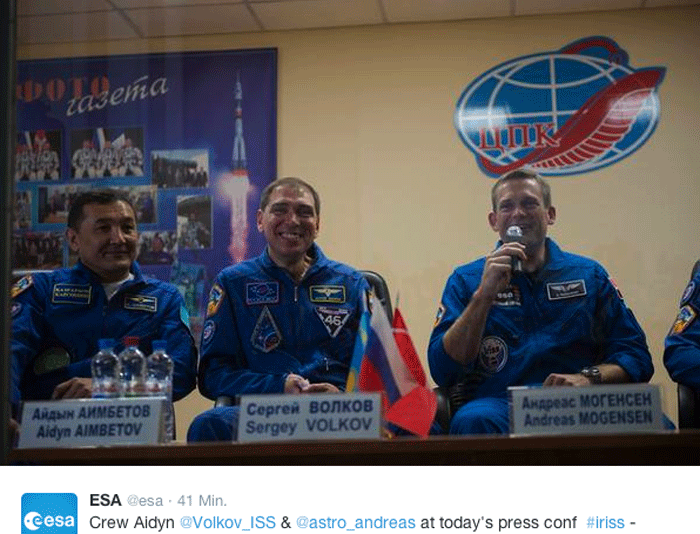
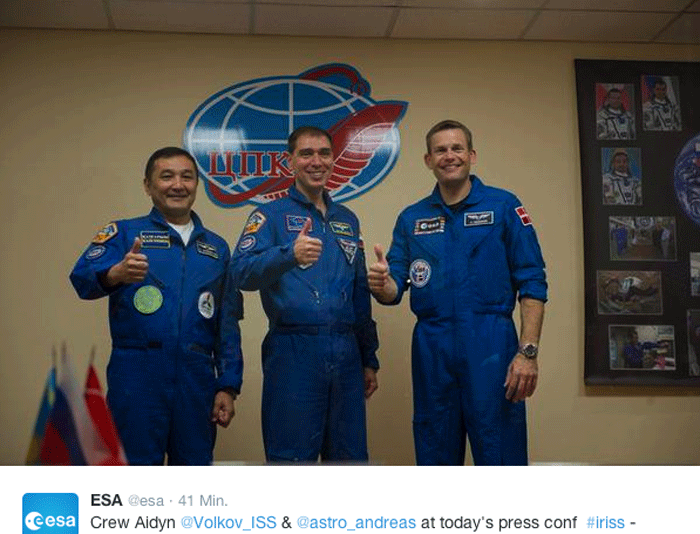

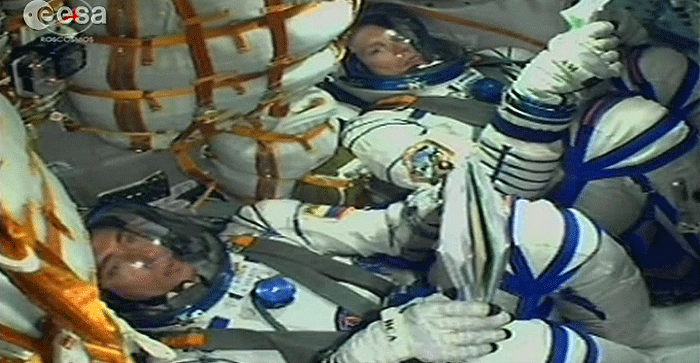
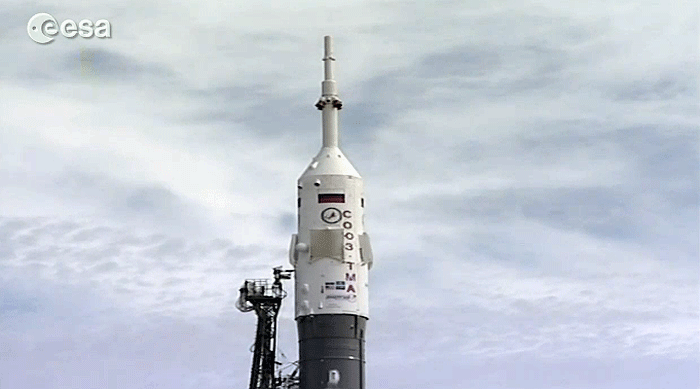
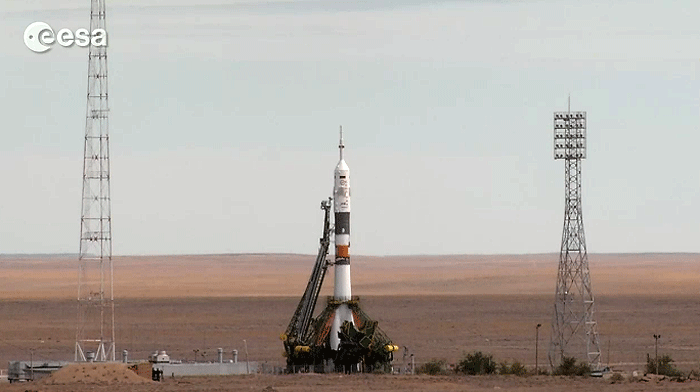

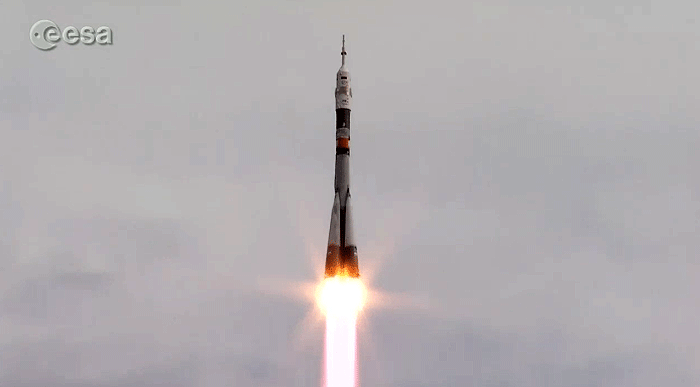
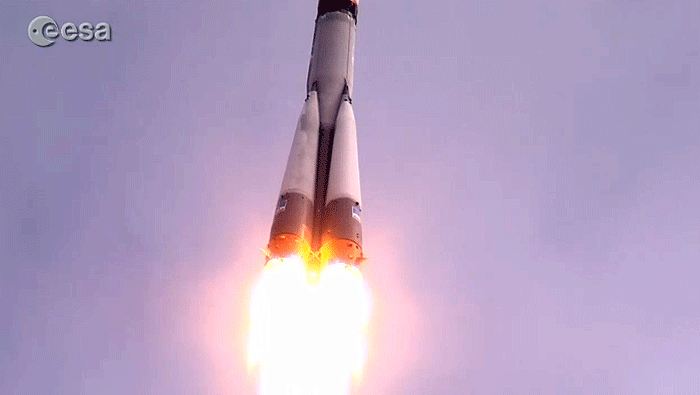
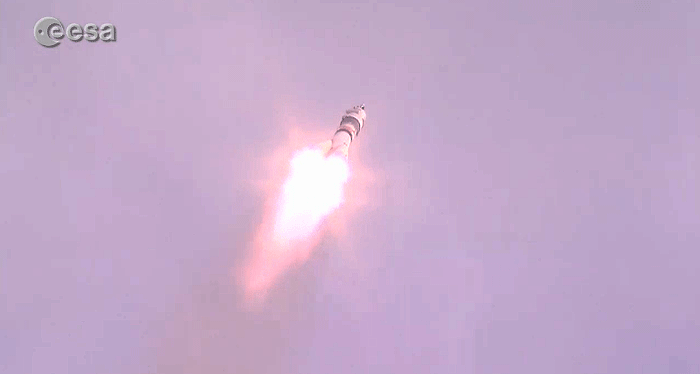
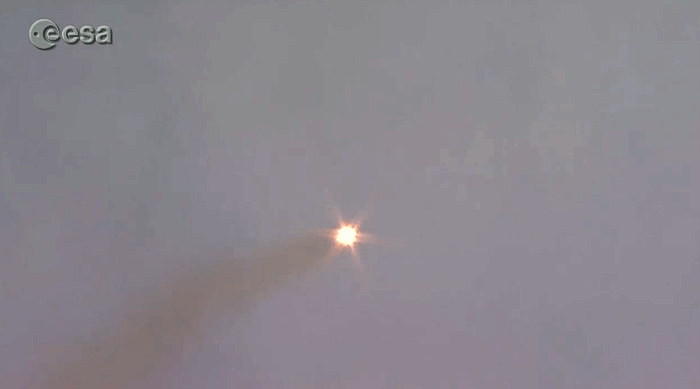
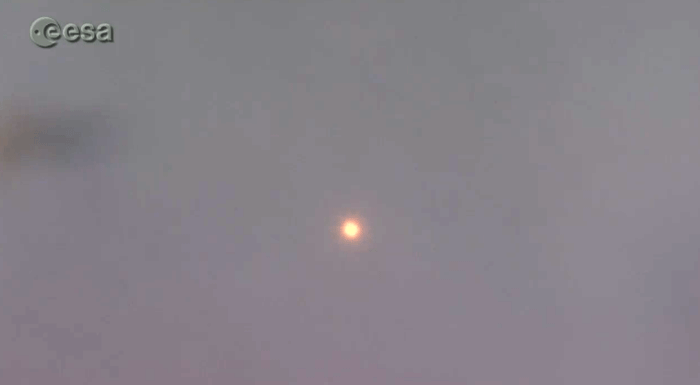
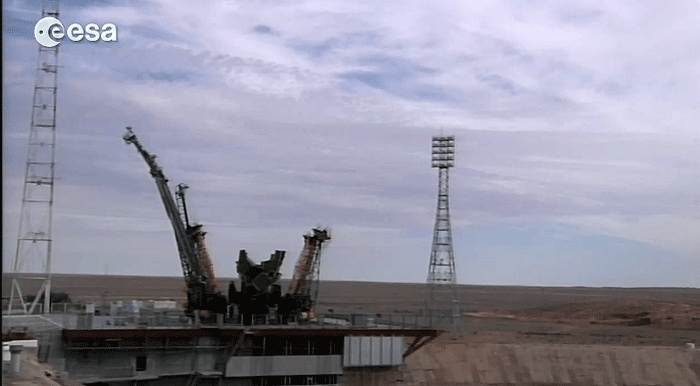
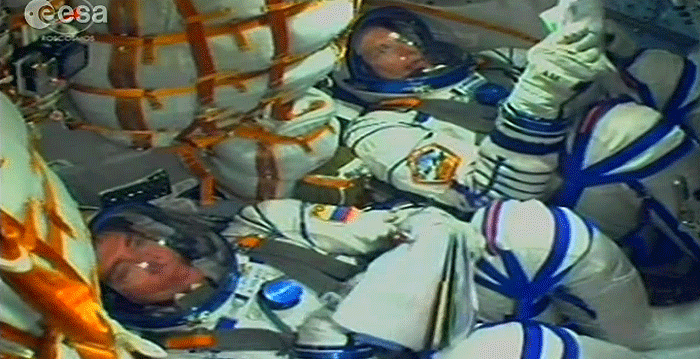
Signals between the crew and the robot must travel a total distance of approximately ninety thousand kilometres, via a satellite constellation located in geostationary orbit. Despite this distance, Andreas will exactly feel what the robot does on the surface – with only a very slight lag.
Andreas, due to launch to the ISS on 2 September, will first attempt to guide the robot to locate an ‘operations task board’ and then to remove and plug a metal pin into it, which has a very tight mechanical fit and tolerance of only about 150 micrometres, less than a sixth of a millimetre.
Quelle: ESA
-
Update: 31.08.2015
.
The Soyuz TMA-18M is now standing on its launchpad for @Astro_Andreas' #IRISS mission. cc @esa

.

Quelle. ESA
-
Update: 1.09.2015
.
#IRISS -unterdessen bereitet sich unser Kollege @Astro_Andreas auf den morgigen #Sojus-Raketenstart zur #ISS vor!



Quelle: ESA
.
Update: 2.09.2015
.
Soyuz Heads to Space Station with New Crew, Return Transportation for One-Year Mission Team

Sergey Volkov of Roscosmos, Andreas Mogensen of ESA (European Space Agency) and Aidyn Aimbetov of the Kazakh Space Agency launched aboard Soyuz TMA-18M from the Baikonur Cosmodrome in Kazakhstan at 12:37 a.m. EDT on Wednesday (10:37 a.m. in Baikonur).
Credits: NASA TV
Three crew members representing Russia, Denmark and Kazakhstan have launched to the International Space Station to provide a new ride home for the station’s one-year crew and continue important research that advances NASA's journey to Mars.
Sergey Volkov of Roscosmos, Andreas Mogensen of ESA (European Space Agency) and Aidyn Aimbetov of the Kazakh Space Agency launched aboard Soyuz TMA-18M from the Baikonur Cosmodrome in Kazakhstan at 12:37 a.m. EDT on Wednesday (10:37 a.m. in Baikonur). They are set to dock to the station at 3:42 a.m. on Friday, Sept. 4. NASA TV coverage of docking will begin at 3 a.m.
At 2:40 p.m. Saturday, Sept. 5, NASA TV will provide a live broadcast as Expedition 44 Commander Gennady Padalka of Roscomos hands over command of the space station to Expedition 44 Flight Engineer Scott Kelly of NASA. Expedition 45 begins on Sept. 11 when Padalka, Mogensen and Aimbetov undock from the orbital outpost in the Soyuz spacecraft designated TMA-16M and return to Earth. The Soyuz TMA-16M carried Padalka, Kelly, and Roscosmos’ Mikhail Kornienko to space in March. Because each Soyuz remains in orbit for about six months, the spacecraft swap is necessary at the midway point of the one-year mission.
With the arrival of Volkov, Mogensen and Aimbetov, nine people will be aboard the orbiting laboratory for the first time since 2013. The three join Expedition 44 Flight Engineers Kelly and Kjell Lindgren of NASA, Commander Padalka and Flight Engineers Oleg Kononenko and Kornienko of Roscosmos, and Kimiya Yui of the Japan Aerospace Exploration Agency (JAXA).
On Tuesday, Sept. 15, Kelly and Kornienko will reach the halfway point of their one-year mission to advance understanding of the medical and psychological challenges astronauts face during long duration spaceflight, in addition to developing countermeasures that will help minimize adverse effects. The pair will spend 342 consecutive days living in space before returning to Earth with Volkov in March 2016 aboard the Soyuz TMA-18M.
In the coming months, Expedition 45 crew members will conduct more than 250 science investigations in fields such as biology, Earth science, human research, physical sciences, and technology development.
The recently installed CALorimetric Electron Telescope (CALET) searches for dark matter, measures cosmic rays and observes sources of high-energy phenomena in the galaxy. CALET seeks answers for several unknowns, including the origin of cosmic rays, how cosmic rays accelerate and move across the galaxy, and the existence of dark matter and its relation to nearby cosmic ray sources. Once scientists take an inventory of the highest-energy radiation in space, they may be able to characterize the radiation environment experienced by humans and encountered by space electronics. This may help determine risk of exposure to this type of radiation.
Ongoing station research also includes the Flame Extinguishment Experiment-2 JAXA (FLEX-2J), a study of combustion in microgravity. Fires burn differently in space, where fuels form spherical droplets and flames burn in a globular shape rather than teardrop. The crew studies the interactions of flames on the motion and ignition, or non-ignition, of millimeter-sized droplets. Results could provide key insights and improve computer modeling of fuel combustion to aid in reducing emissions and improving fuel efficiency in space and on Earth.
During the second half of the marathon one-year mission, the team will continue a wide variety of human research studies, such as the Assessing Telomere Lengths and Telomerase Activity in Astronauts (Telomeres). Telomeres are "caps" on the ends of chromosomes that protect them from fraying, much like the aglet on the end of a shoelace. Telomeres shorten over time, and the rate at which this occurs can be increased by stress, leading to accelerated aging, cardiovascular disease, cancer and an impaired immune system. The Telomeres investigation uses crew member blood samples to examine how telomeres and telomerase, an enzyme that maintains the length of telomeres, are affected by space travel and to better evaluate the impact of future spaceflight.
The International Space Station is a convergence of science, technology and human innovation that enables us to demonstrate new technologies and make research breakthroughs not possible on Earth. It has been continuously occupied since November 2000 and, since then, has been visited by more than 200 people and a variety of international and commercial spacecraft. The space station remains the springboard to NASA's next giant leap in exploration, including future missions to an asteroid and Mars.
Quelle: NASA
---
Start-Frams: ESA
-











Quelle: ESA
---
4729 Views
